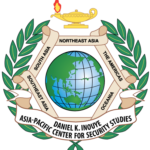By Amparo Pamela Fabe1 & Tran My Hai Loc2
1,2 Fellow, DKI APCSS, DKI APCSS alumni
Corresponding Authors:
Amparo Pamela Fabe
Professor, National Police College, Philippines
Tran My Hai Loc
Lecturer, HCMC University of Foreign Languages-Information Technology
Declaration:
“All authors of this article contributed to the conception, design, analysis or interpretation of the work, drafted the work or revised it, approved of the final version, and agreed to be accountable for all aspects of the work.”
Competing interest statement:
“The author/s have no competing interests to declare.”
Summary
The Philippines and Vietnam, despite the persistent issue of coercion in the maritime domain from China since the 1980s, have shown remarkable resilience. The escalating coercive actions by China in the Southeast Asia Sea [*], spanning the economic, information, and maritime domains, have indeed created a volatile situation. However, in the face of these challenges, the Philippines and Vietnam have unwaveringly committed to the international rule of law and peaceful conflict resolution. In a display of their determination, both countries have decided to join forces, enhance their maritime capabilities, deepen regional cooperation, leverage international laws and norms, diversify trade and economic partners, and pursue diplomatic engagements.
The Southeast Asian maritime region, particularly the East Sea, has become a hotspot of geopolitical tension and coercion. The Philippines and Vietnam face increasing challenges from assertive actions by more considerable powers, notably China. These actions include the creation of artificial islands, military deployments, and interference with fishing and resource extraction activities. The East Sea, with its strategic significance, rich resources, and vital shipping route, exacerbates these tensions. Despite their sovereign rights and international support, such as the 2016 Hague ruling favoring the Philippines [1], both countries struggle with limited naval capabilities and economic constraints. China’s aggressive tactics threaten the territorial integrity of the Philippines and Vietnam, regional stability, and the global maritime order. To counter these coercive measures, these nations must enhance their naval capabilities and leverage diplomatic avenues to uphold international law and norms.
Since 2009, China has aggressively expanded its control over the East Sea through various “Gray Zone” tactics. These include constructing artificial islands and converting them into military outposts [2], applying diplomatic and economic pressures, conducting research, and deploying coast guard vessels and maritime militia. This multifaceted approach has significantly altered the region’s geopolitical landscape, posing a complex challenge for the Philippines and Vietnam.
Chinese outposts in the Spratly Islands facilitate sustained deployments and harassment operations throughout the nine-dash line. Chinese survey vessels and maritime forces have repeatedly disrupted Vietnam’s oil and gas activities within its exclusive economic zone (EEZ) while simultaneously conducting their exploration. China aggressively counters unilateral energy activities within its claimed boundaries while exploiting resources in disputed areas.
In addition, China frequently engages in illegal activities in EEZs of countries involved in territorial disputes through fishing and maritime patrol operations. One significant incident occurred in November 2020, when a Chinese Coast Guard vessel and a Malaysian navy ship were involved in a standoff over hydrocarbon exploration near Malaysia’s Sarawak State [3]. Even during the pandemic, China continued to conduct patrols at the disputed Second Thomas Shoal, Luconia Shoals, and Scarborough Shoal in the East Sea [4].
Coercion by Chinese maritime militia intensified following Philippine repair activities on That Island in December 2018 [5], culminating in a massing of over 200 militia vessels at Whitson Reef in March 2021 [6]. These actions raised fears of potential Chinese occupation and military construction on the reef, which lies within the Philippines’ EEZ. Although China claimed these vessels were fishing boats seeking refuge, satellite images and expert analysis identified them as part of state-controlled militia units [7].
China’s recent operations at Whitson Reef reflect its broad strategy of coercive measures to assert control over the East Sea. Advanced surveillance and communication platforms enhance China’s ability to monitor and dominate activities in these contested waters.
Given China’s coercive actions in the East Sea, both countries can counter these challenges through comprehensive military, diplomatic, legal, and economic strategies.
Firstly, enhancing maritime capabilities is crucial. Both nations should invest in modernizing their naval and coast guard fleets, incorporating advanced surveillance and defense systems to patrol better and protect their territorial waters. Collaborating on joint maritime patrols and exercises can also bolster their defensive posture. The Philippines and Japan finalized a US$507 million Maritime Safety Capacity Improvement Project to fund five large patrol vessels and an integrated logistics support package [8]. In 2024, the Philippine Coast Guard (PCG) has an additional procurement budget of US$108,000 for three new vessels for increased maritime patrols [9]. Both funding sources will assist the PCG in securing vital sea lines of communication in the West Philippine Sea and the Sulu-Celebes Seas.
Secondly, the Philippines and Vietnam should deepen cooperation with regional partners through ASEAN to promote a unified stance against aggression. Additionally, forging stronger ties with global powers like the United States, Japan [10], Australia [11], and the EU can provide both military support and diplomatic and economic leverage. Additionally, the Philippines and New Zealand signed a Mutual Logistics Supporting Arrangement on June 10, 2024.[†] Both countries expect to start discussions on a Status of Visiting Forces Agreement (SOFVA) by the end of 2024. Philippine President Ferdinand Marcos and New Zealand Prime Minister Christopher Luxon have reached a consensus to intensify collaboration on maritime security. Both leaders agreed to elevate their country’s ties to a comprehensive partnership by 2026 [12]. This cooperation paves the way for freedom of navigation operations and showcases a collective commitment to maintaining open and secure sea lanes.
Recent diplomatic efforts between the Philippines and Vietnam have been bolstered by specific agreements signed during President Marcos Jr.’s visit to Vietnam in January 2024. These agreements, including Memorandums of Understanding, focus on preventing incidents in the East Sea and enhancing cooperation between their respective coast guards [13]. Establishing a direct hotline aims to mitigate tensions and foster collaboration between the two nations. This outreach to Vietnam aims to address ongoing issues among claimant states and potentially facilitate negotiations for the ASEAN Code of Conduct, thus contributing to regional stability. The inaugural bilateral conference between the Vietnam Coast Guard and the Philippine Coast Guard in April 2024 signifies a significant advancement in fostering closer ties. Plans include exchanges and visits, demonstrating a commitment to nurture cooperation. Furthermore, efforts are directed toward improving coordination in maritime law enforcement, tackling piracy and armed robbery, as well as intensifying search and rescue operations to maintain regional security [14].
Thirdly, leveraging international law and norms is vitally important. Both countries should regularly emphasize in international forums about China’s violations of UNCLOS. Utilizing legal avenues, like the 2016 Hague ruling in favor of the Philippines, can help build global pressure on China to comply with established rules. To maintain the rules-based order, the Philippines plans to file a legal case against China for destroying coral reefs and features in the East Sea, particularly around Scarborough Shoal [15]. By regularly bringing these issues to the attention of the United Nations and other international bodies, both countries can also accumulate broader international support.
Economically, diversifying trade and investment partners can reduce dependency on China and mitigate economic coercion. Developing closer 8-11 economic ties with other ASEAN members and key global economies can create a buffer against Chinese economic pressures. Additionally, enhancing their domestic industries and infrastructure can improve economic resilience. The Philippines and Vietnam are implementing an action plan to promote their strategic partnership for 2025-2030, aiming to increase bilateral trade to US$10 billion. Beyond traditional areas of cooperation, the two countries will expand into green and digital economies [16].
Lastly, sustained diplomatic engagement is indispensable. The Philippines and Vietnam should pursue all possible avenues for peaceful resolution while remaining firm in defending their sovereignty. An excellent example of diplomatic engagement was the Philippine-Vietnam bilateral workshop organized by the Daniel K. Inouye Asia Pacific Center for Security Studies and the National Graduate Institute for Policy Studies last April 8-11, 2024, in Yokohama, Japan. The workshop provided a perfect avenue for an open exchange of insights and policy recommendations to deal with economic, media, and maritime coercion from China. This workshop sets the stage for future collaboration in areas of mutual interest for both countries. Engaging in multilateral dialogues and conflict resolution mechanisms can help manage tensions and prevent escalation. Combining these efforts, the Philippines and Vietnam can effectively counter China’s coercive tactics, uphold their territorial integrity, contribute to regional stability, and adhere to a rules-based international order.
[*] The Southeast Asia Sea, covering approximately 3.5 million square kilometers, is a vital maritime region in Southeast Asia. It is bounded by Vietnam to the west, the Philippines to the east, China to the north, and Borneo and Indonesia to the south and southeast. This sea is known by various names depending on the country, such as the South China Sea internationally, Bien Dong/ East Sea in Vietnam, and the West Philippine Sea in the Philippines
[†] Philippine Foreign Secretary Enrique Manalo welcomed the signing of the Mutual Logistics Support Arrangement (MLSA), a pivotal document that will greatly enhance future military engagements between our nations,” Manalo said in his remarks during the joint press briefing with visiting New Zealand Deputy Prime Minister and Foreign Minister Winston Raymond Peters last June 10, 2024. The MLSA was signed between Philippine Defense Assistant Secretary Marita Yoro and Royal New Zealand Navy Assistant Acting Deputy Chief Commodore Maxine Lawes.
REFERENCES
[1] Caitlin Campbell & Nargiza Salidjanova (2016), South China Sea Arbitration Ruling: What Happened and What’s Next?, Issue Brief, U.S.-China Economic and Security Review Commission, https://www.uscc.gov/research/south-china-sea-arbitration-ruling-what-happened-and-whats-next
[2] Zachary Haver (2020), Sansha and the Expansion of China’s South China Sea Administration, The Asia Maritime Transparency Initiative and The Center for Strategic and International Studies, https://amti.csis.org/sansha-and-the-expansion-of-chinas-south-china-sea-administration/
[3] Asia Maritime Transparency Initiative (2020a), China and Malaysia in Another Staredown Over Offshore Drilling, The Asia Maritime Transparency Initiative and The Center for Strategic and International Studies, https://amti.csis.org/china-and-malaysia-in-another-staredown-over-offshore-drilling/
[4] Asia Maritime Transparency Initiative (2020b), Still on the Beat: China Coast Guard Patrols in 2020, The Asia Maritime Transparency Initiative and The Center for Strategic and International Studies, https://amti.csis.org/still-on-the-beat-china-coast-guard-patrols-in-2020/
[5] Council on Foreign Relations (nd), 1895 – 2023: China’s Maritime Disputes, Council on Foreign Relations, https://www.cfr.org/timeline/chinas-maritime-disputes
[6] Samir Puri & Greg Austin (2021), What the Whitsun Reef incident tells us about China’s future operations at sea, Online Analysis, International Institute for Strategic Studies, https://www.iiss.org/online-analysis/online-analysis/2021/04/whitsun-reef-incident-china/
[7] Brad Lendon (2021), Beijing has a navy it doesn’t even admit exists, experts say. And it’s swarming parts of the South China Sea, Cable News Network, https://edition.cnn.com/2021/04/12/china/china-maritime-militia-explainer-intl-hnk-ml-dst/index.html
[8] NavalNews. (2024), Philippines And Japan Finalize Largest Coast Guard Project To Date, https://www.navalnews.com/naval-news/2024/05/philippines-and-japan-finalize-largest-coast-guard-project-to-date/
[9] GMANEwsonline. (2024). 2024 budget to fund three new Coast Guard ships for WPS defense —Zubiri. https://www.gmanetwork.com/news/topstories/nation/891933/2024-budget-to-fund-3-new-coast-guard-ships-for-wps-defense-zubiri/story/
[10] Cliff Venzon (2023), Philippines, Japan pledge to deepen security and economic ties, Nikkei Asia, https://asia.nikkei.com/Politics/International-relations/Philippines-Japan-pledge-to-deepen-security-and-economic-ties
[11] Karen Lema (2023), Australia, Philippines upgrade ties to strategic partnership, Reuters, https://www.reuters.com/world/australia-pm-says-new-strategic-partnership-strengthen-ties-with-philippines-2023-09-08/
[12] Bloomberg (2024), Philippines, New Zealand Plan Troop Visits, Logistics Deals, https://www.bloomberg.com/news/articles/2024-04-18/philippines-new-zealand-to-boost-trade-maritime-security-ties.
[13] Mara Cepeda (2024), Philippines, Vietnam agree to cooperate in the South China Sea amid a more assertive Beijing, The Straits Times, https://www.straitstimes.com/asia/se-asia/philippines-vietnam-agree-to-cooperate-in-south-china-sea-amid-a-more-assertive-beijing
[14] Vietnamplus. (2024), Vietnamese, Philippine coast guards convene a first conference, https://en.vietnamplus.vn/vietnamese-philippine-coast-guards-convene-first-conference-post285022.vnp
[15] The Diplomat. (2024), Philippines Calls for International Probe Into Environmental Damage at Disputed Shoal, https://thediplomat.com/2024/05/philippines-calls-for-international-probe-into-environmental-damage-at-disputed-shoal/
[16] Vietnamlawmagazine. (2024), Vietnam, Philippines to forge cooperation in various spheres, https://vietnamlawmagazine.vn/vietnam-philippines-to-forge-cooperation-in-various-spheres-71215.html
The views expressed in this article are those of the author and do not reflect the official policy or position of DKI APCSS, the Department of Defense, or the U.S. Government. The appearance of external hyperlinks does not constitute endorsement by the United States Department of Defense (DoD) of the linked websites, or the information, products, or services contained therein. DoD does not exercise any editorial, security, or other control over the information you may find at these sites.
July 2024
Published: July 12, 2024
Category: Perspectives
Volume: 25 - 2024
Author: Amparo Pamela Fabe,Tran My Hai Loc



